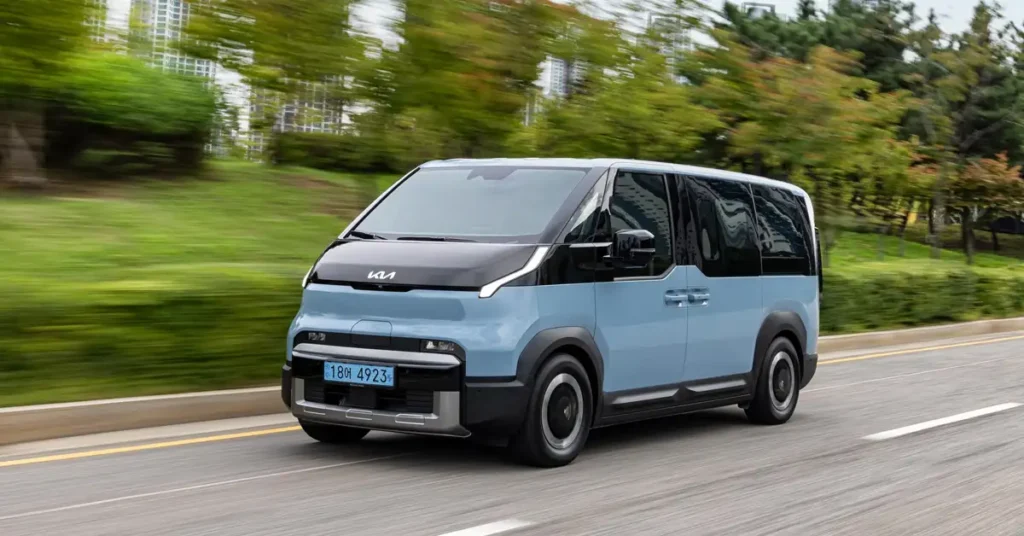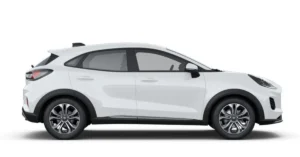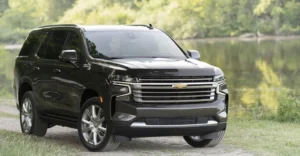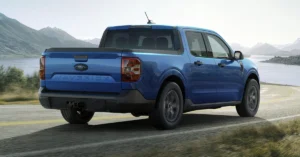(Image Source: Kia news centre)
When Kia pulled the wraps off the PV5 in Seoul on October 6, 2025, it wasn’t just showing another electric van it was revealing a fresh take on how we move, work, and live. The PV5 marks the beginning of Kia’s Platform Beyond Vehicle (PBV) era, designed to adapt to life’s changing needs rather than limit them.
It’s a van, a shuttle, a workshop, even a mobile studio depending on who you ask. The PV5 is built around customer-first modularity, and that’s exactly what makes it such a big deal.
Why the PV5 Matters
Kia has set an ambitious goal: 250,000 PBV sales by 2030. The PV5 is just the start the PV7 follows in 2027, and PV9 by 2029 each one expanding the modular EV ecosystem.
The focus is clear: versatility, practicality, and sustainability.
Key highlights:
- Flexible Body System. Up to 16 configurations: Passenger, Cargo, High Roof, and Chassis Cab.
- Accessibility First. The lowest floor in its class makes boarding easier for everyone, including children and elderly passengers.
- Solid Range + Quick Charge. Up to 416 km on a single charge and 10–80% top-up in just 30 minutes.
- Smart Connectivity. Real-time fleet management, modular hardware compatibility, and a digital ecosystem tailored for PBVs.
For Kia, the PV5 isn’t just another product. It’s a mobility canvas a platform meant to evolve with the people who use it.
Born From Real-World Feedback
Kia didn’t build the PV5 in isolation. The concept evolved through collaboration with fleets, startups, and logistics companies shaping what it became.
Through PBV Partner Days (2022–2023), more than 120 industry players contributed to design and usability decisions. That’s how features like stain-resistant interiors, removable seating, and utility mounting points made their way into production.
Kia also partnered with DHL Korea, Korea Post, and Kakao Mobility to test real-world use cases everything from parcel delivery to ride-hailing integration.
And because the PV5’s design embraces modularity, it can morph into a camper, service van, or delivery vehicle all from the same platform.
Real-World Versatility
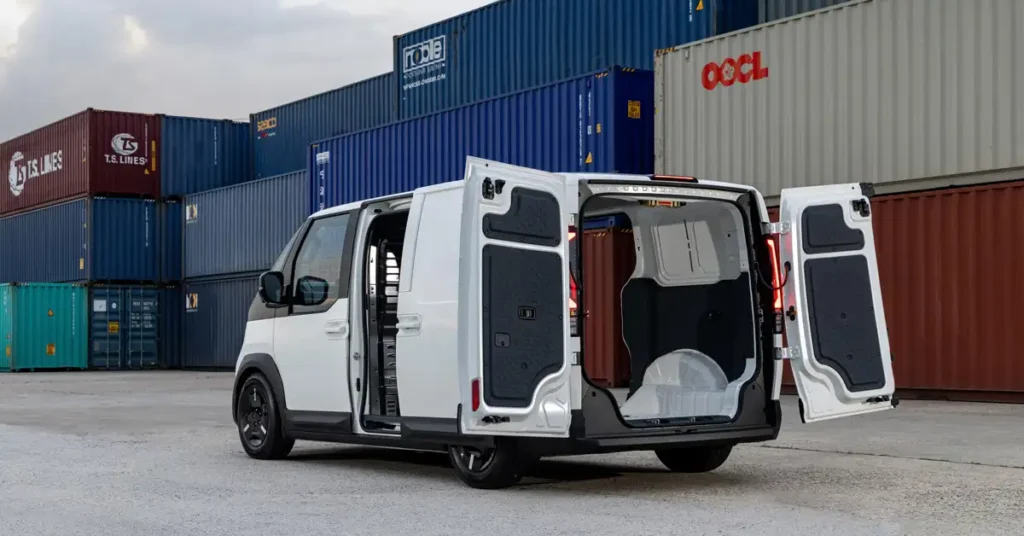
(Image Source: Kia news centre)
Here’s where the PV5 really shines adaptability. Whether you’re running a business or heading off-grid, it’s ready for whatever you throw at it.
- Ride services and shuttles passenger-focused setups for hotels, airports, or city transport.
- Trades and logistics modular walls and mountable racks for electricians or delivery fleets.
- Outdoor living V2L power output supports camping, filmmaking, or off-grid work.
- Mobile office flat floors, multiple power ports, and space-efficient layouts.
The Passenger version folds its second-row seats to unlock generous cargo room without losing comfort or convenience.
Design: Industrial, But Intelligent
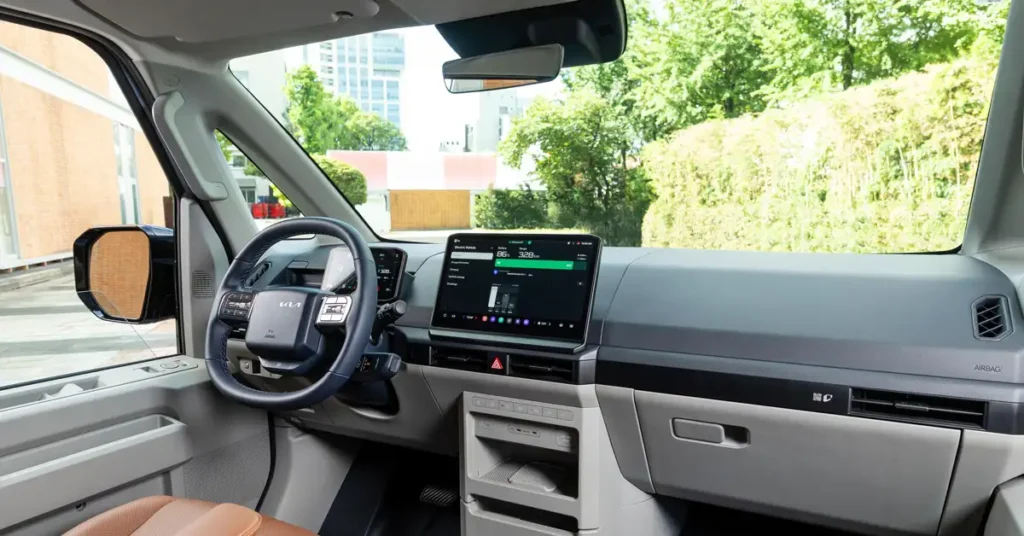
(Image Source: Kia news centre)
True to Kia’s Opposites United philosophy, the PV5 balances rugged utility with minimalist beauty.
The lower cladding is modular built for durability and easy replacement while the upper cabin’s smooth curves give it a futuristic feel. Bold vertical lighting and black accents add visual depth and signal intent: this van means business.
Inside, everything revolves around the driver. Visibility is superb, controls are intuitive, and storage is where you expect it. The cabin doesn’t feel like a delivery van it feels like a precision-built workspace on wheels.
Under the Skin: Platform, Power & Performance
Under the Skin: Platform, Power & Performance
Underneath, the PV5 rides on Kia’s new E-GMP.S architecture an evolution of Hyundai’s E-GMP platform, engineered specifically for service vehicles.
| Specification | Passenger / Cargo |
| Battery options | 43.3 kWh (LFP), 51.5 kWh, 71.2 kWh (NCM) |
| Motor output | Up to 120 kW / 250 Nm |
| Range | Up to 416 km (WLTP) |
| Fast charging | 10–80% in ~30 minutes |
The low-mounted battery keeps the center of gravity balanced, giving the PV5 remarkably stable handling even when fully loaded. It’s not a sports car, but it doesn’t feel like a lumbering van either.
How It Stacks Up
How It Stacks Up
| Feature | Kia PV5 | Typical PBV Rivals |
| Modular variants | Up to 16 configurations | Usually 2–4 |
| Step height | ~399 mm (Passenger) | Higher, less accessible |
| Battery options | 43.3 / 51.5 / 71.2 kWh | Limited |
| Conversion readiness | Built-in mounting points, L-tracks | Aftermarket only |
| Market focus | Private + commercial | Mostly commercial |
Kia’s biggest strength? Integration. Everything from mounts to software was designed with modularity in mind, not as an afterthought.
Why It Matters
The Problem: Most people and businesses juggle multiple vehicles a van for work, an SUV for family, a camper for weekends.
The Agitation: That’s costly, inefficient, and wasteful. Each vehicle sits idle most of the time.
The Solution: The PV5.
A single platform that morphs to match your day hauler, shuttle, office, or retreat all with the same EV. It’s mobility simplified.
Frequently Asked Questions
Q: What are the available powertrains?
Battery options range from 43.3 to 71.2 kWh, paired with a motor delivering up to 120 kW / 250 Nm.
Q: How fast can it charge?
It supports fast charging from 10 to 80% in about 30 minutes.
Q: How many configurations are available?
Up to 16 total including Passenger, Cargo, Chassis Cab, and High Roof designs.
Q: When will it launch globally?
Production starts in Korea later this year, with Europe in 2025 and global rollout in 2026.
Q: Does it support external power use?
Yes through Vehicle-to-Load (V2L) capability, delivering up to 3.68 kW, enough to run tools, appliances, or camping setups.
MotorHub UAE: Future-Ready Support for PBV Fleets
As modular EVs like the PV5 enter the market, they’ll need specialized maintenance and software support especially in demanding climates like the UAE.
MotorHub offers:
- Calibration and modular upgrades body swaps, sensor alignments, and conversions.
- OTA and diagnostics real-time updates and predictive maintenance.
- V2L and electrical module servicing ensuring reliable mobile power.
- Fast turnaround repairs modular bumpers, replaceable cladding, and optimized uptime.
With MotorHub, businesses in the Emirates can confidently adopt modular electric fleets designed to last no downtime, no compromises.
